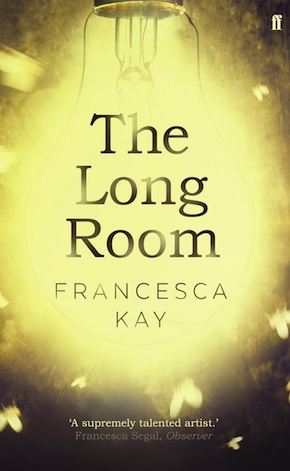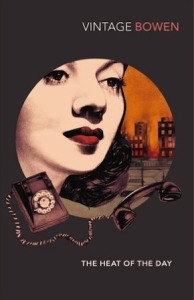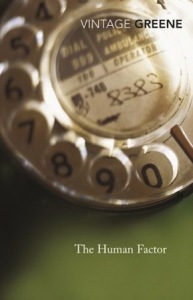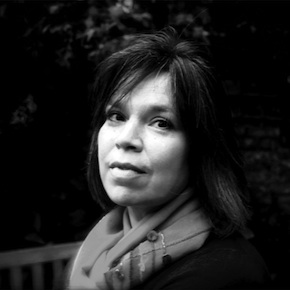Spooks and mirrors
by Francesca Kay
‘Elegantly done… Superbly atmospheric.‘ Telegraph
There are good reasons why an imagined world of spies and spycraft has provided an alluring backdrop for British fiction and, subsequently, British cinema and television for more than a hundred years. It is a land that is regularly visited, with a long list of explorers, from Kipling, at the very beginning of the twentieth century, to Tom Rob Smith, by way of Erskine Childers, Joseph Conrad, Somerset Maugham, Graham Greene, Ian Fleming, Len Deighton and a host of others, not to mention John le Carré. He is the writer who drew so convincing a picture of its terrain that his readers take it for reality. His lexicon – his Circus and his Moscow Rules, his lamplighters and ferrets – and his account of character and habitat in that particular terra fabricata have crossed the border of invention and become points of reference that we – the armchair travellers – can use as shorthand for an actual world. Who called double agents ‘moles’ before the BBC’s dramatisation of Tinker Tailor Soldier Spy riveted its audience in 1979? Whatever the daily realities of life within Britain’s intelligence agencies may be, it is hard not to picture them through the prism of le Carré’s imagination. But, for all his tightly woven plots, the interesting thing in his great novels is not so much the action but the background stories and the motivations of his mavericks and dipsos, his cuckolds and lonely souls.
This is not to underestimate the value of the territory to the writers, filmmakers and audiences for whom action and adventure are the primary goal. Spyland is an obvious setting for stories of heroes and villains – age-old stories, of abiding interest, for which there will always be a need – where good will assuredly triumph over evil and motives are never mixed, where expensive cars equipped with guns convert to speedboats, and men with chiselled cheekbones singlehandedly foil world-threatening plots. (Occasionally those threats are overcome by women, also blessed with good bone-structure, but only too often women are left to watch the male heroes from the sidelines.)
For me it’s more intriguing when quite ordinary people without remarkable cheekbones or ownership of Aston Martins find themselves in the pages of spy fiction.”
In these fictions, an espionage setting serves the same sort of purpose as policing does for detective stories: it allows characters to go about outwitting baddies in ways they could less plausibly do if they were tree surgeons or ceramicists or road menders. But for me it’s more intriguing when quite ordinary people, people like us, shop owners and accountants, without remarkable cheekbones or ownership of Aston Martins, find themselves in the pages of spy fiction.
 One such person is Stella Rodney, the protagonist of Elizabeth Bowen’s beautiful novel, The Heat of the Day, which is set in the midst of World War Two and was published only three years after the war ended. The novel is not usually classified as spy fiction but espionage is one of its subjects nevertheless. Stella, “generous and spirited to a fault, not unfeeling”, is one point of a triangle; the others are her lover, Robert Kelway, and Harrison, a counter-intelligence operative. It’s wartime; people exist in “an atmosphere in which everything goes on and nothing is said”. Stella is employed on secret work in an organisation called Y.X.D., Kelway also has access to sensitive information, and Harrison is, of course, a spy. The three of them are trapped in a bitter confederacy in which, as Stella says, they are compelled “to learn some terrible human lesson which is to undo everything we had thought we had. It’s that, not death, that we ought to live prepared for.”
One such person is Stella Rodney, the protagonist of Elizabeth Bowen’s beautiful novel, The Heat of the Day, which is set in the midst of World War Two and was published only three years after the war ended. The novel is not usually classified as spy fiction but espionage is one of its subjects nevertheless. Stella, “generous and spirited to a fault, not unfeeling”, is one point of a triangle; the others are her lover, Robert Kelway, and Harrison, a counter-intelligence operative. It’s wartime; people exist in “an atmosphere in which everything goes on and nothing is said”. Stella is employed on secret work in an organisation called Y.X.D., Kelway also has access to sensitive information, and Harrison is, of course, a spy. The three of them are trapped in a bitter confederacy in which, as Stella says, they are compelled “to learn some terrible human lesson which is to undo everything we had thought we had. It’s that, not death, that we ought to live prepared for.”
The question of who is spying on whom, or for whom, is not Bowen’s concern. She makes that fairly clear from the outset, and the suspense of the novel lies in Stella’s response to an unbearable situation rather than in the unfolding of the plot. What Bowen is investigating with great delicacy in this novel is not a contract between intelligence agents but the near impossibility of knowing another person truly, even when in love. “If actor, to her and for her so very good an actor, then why not an actor of love?”
Bowen dedicated The Heat of the Day to her lover Charles Ritchie, a Canadian diplomat whom she met in London in 1941. Like Kelway, “younger than Stella by five or six years”, Richie was seven years younger than Bowen. Their love affair began in the heightened atmosphere of war: “Never had any season been more felt; one bought the poetic sense of it with the sense of death. Out of mists of morning charred by the smoke from ruins each day rose to a height of unmisty glitter; between the last of sunset and first note of the siren the darkening glassy tenseness of evening was drawn fine.” But she was married when they met, and in 1948, the year the novel was published, so was he.
It’s usually misguided to read autobiography into fiction, and in any case Bowen was far too intelligent a writer to fall into the trap of inadvertent self-exposure. Her relationship with Ritchie lasted, in spite of geographical distance, until she died in 1973, and she always put a brave face on the situation. Even so, the urgent questions that this novel asks are those that anybody complicatedly in love must face: can the lover be trusted; are the words he speaks the truth of what he feels? Might he betray her most intimate confidences to a third person, to his wife, like a double agent or a spy? Having brilliantly framed these questions within the context of espionage in wartime, Bowen can put them in ways that transcend the particular and become universal; they are not then simply the anxieties of one fictitious lover but relevant to any relationship that demands a level of trust; personal, political or national.
 Another novel that explores the agency of love against the scenery of espionage is Graham Greene’s The Human Factor, published in 1978. He said of it that he wanted “to present the [Secret] Service unromantically as a way of life, men going daily to their office to earn their pensions, the background much like that of any other profession — whether the bank clerk or the business director — an undangerous routine, and within each character the more important private life.” Indeed Maurice Castle, the novel’s protagonist, is completely without glamour. He is a man by nature so cautious and conventional that having a picnic in October strikes him as pleasurably rash. For thirty years he has kept to his routine: lunch in a pub behind St James’s Street; the same train home to Berkhamsted; his bicycle waiting at the station. His shopping list includes Maltesers. But unlike his colleagues Davis, who has “the defensive humour of a lonely man”, and Daintry, who lunches by himself on broken bits and pieces of sardine, Castle is married and deeply in love with his wife. He is also a heavy drinker, always choosing J&B whisky because its pale colour makes a large one look no stronger than a weak one of another brand.
Another novel that explores the agency of love against the scenery of espionage is Graham Greene’s The Human Factor, published in 1978. He said of it that he wanted “to present the [Secret] Service unromantically as a way of life, men going daily to their office to earn their pensions, the background much like that of any other profession — whether the bank clerk or the business director — an undangerous routine, and within each character the more important private life.” Indeed Maurice Castle, the novel’s protagonist, is completely without glamour. He is a man by nature so cautious and conventional that having a picnic in October strikes him as pleasurably rash. For thirty years he has kept to his routine: lunch in a pub behind St James’s Street; the same train home to Berkhamsted; his bicycle waiting at the station. His shopping list includes Maltesers. But unlike his colleagues Davis, who has “the defensive humour of a lonely man”, and Daintry, who lunches by himself on broken bits and pieces of sardine, Castle is married and deeply in love with his wife. He is also a heavy drinker, always choosing J&B whisky because its pale colour makes a large one look no stronger than a weak one of another brand.
It is a measure of Greene’s subtlety that the relationship between Castle and his wife is not straightforwardly romantic. Sarah has a son but he is not Castle’s, and Castle’s secret drinking is as much a bond between them as their love: “She had carefully measured out a quadruple whisky by English pub standards, and now she brought it to him and closed the glass in his hand, as though it were a message that no one else must read.” These people are flawed and therefore credible; like Stella they are, in Bowen’s words, “not wholly admirable; but who is?” They equivocate, they make compromises and mistakes, they walk their dogs and, in a world where “nothing need be ever exactly said”, some of them betray their countries, while staying faithful to the ones they love.
“A wilderness of mirrors.” The words are T.S. Eliot’s but it was James Jesus Angleton, once head of counterintelligence at the CIA, who first applied them to his own Spyland, and they have resonated ever since in many different accounts of that intriguing place with its own arbitrary rules, where nothing is clear, alliances are expedient and trustfulness synonymous with stupidity. Truth is always relative in that world for, after all, what is intelligence, even when directed to good ends, but information obtained clandestinely, if not through actual deception? And that is why it is the perfect setting for writers exploring human responses under pressure, whose characters seek answers to such vital questions as: who am I in fact, if I spend my working life pretending to be someone else; how am I perceived and, crucially, how can I really know another person?
As the epigraph to The Human Factor Greene quoted Conrad: “I only know that he who forms a tie is lost. The germ of corruption has entered his soul.” Greene was being ironic. Conrad – that other great conqueror of Spyland, whose secret agent Verloc is the prototype of all its other morally compromised inhabitants – put those words into the mouth of a character in the novel Victory. But of that same character a few lines later the narrator observes that his connection with a girl, “that human being so near and still so strange”, had given him “a greater sense of reality than he had ever known in all his life”. The idea that genuine connectedness to another person offers a place of safety in Spyland, or in other countries for that matter, is one with which both Greene and Bowen surely would agree.
Spyland changes over time, as all imagined territories must. The success of recent TV series such as Homeland suggests that contemporary mappers have found effective ways of mixing the thriller element of adventure with the more interior dramas of conscience and moral equivocation. Terrorists and hackers have taken the place of Cold War spies. But Spyland will continue to exist, with all its variations, for as long as we need that wilderness to reflect our ideologies and concerns.
 Francesca Kay’s first novel, An Equal Stillness, won the Orange Award for New Writers and was nominated for the Authors’ Club First Novel Award and for Best First Book in the Commonwealth Writers’ Prize, and her second, The Translation of the Bones, was longlisted for the Orange Prize. Her third novel, The Long Room, tells the story of Stephen Donaldson, a new recruit to the mysterious Institute in Cold War London who, listening in to and entranced by the lives of others, sets himself up for a dizzying fall.
Francesca Kay’s first novel, An Equal Stillness, won the Orange Award for New Writers and was nominated for the Authors’ Club First Novel Award and for Best First Book in the Commonwealth Writers’ Prize, and her second, The Translation of the Bones, was longlisted for the Orange Prize. Her third novel, The Long Room, tells the story of Stephen Donaldson, a new recruit to the mysterious Institute in Cold War London who, listening in to and entranced by the lives of others, sets himself up for a dizzying fall.
Author portrait © Mark Alexander
The Long Room is published by Faber & Faber in hardback and eBook.
Read more.

